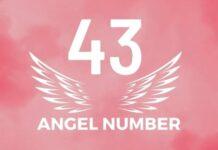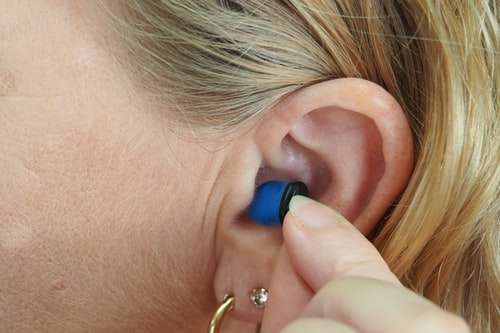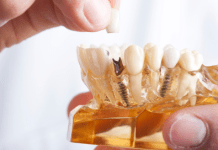Choosing a hearing aid to address hearing loss might seem more complex than you may have imagined. But it doesn’t have to be. Ask yourself the following three questions to help you narrow down your options and pinpoint the type and style of listening device that will work best for you. Below are few suggestion to consider before or when choosing a hearing Aid.
Table of Contents
1. What’s the best type of hearing aid for my lifestyle?
There are several types of hearing aids available, so it’s important you choose the one that works best with your lifestyle. For example, if you’re a highly active person who plays sports, you’ll want a hearing aid that is secure to avoid losing the device. In your case, completely-in-the-canal (CIC) hearing aids are a good choice. They are the smallest and least visible type of hearing aid and because they reside in your hearing canal, they are less likely to pick up wind noise.
For those who have a more sedentary lifestyle, a behind-the-ear (BTE) or receiver-in-the-canal (RIC) are two good options. A BTE hearing aid hooks over the top of the ear and connects by tube to a custom ear mold that fits inside the ear canal. A RIC hearing aid is similar to the BTE but uses wire rather than tubing to connect to the device’s speaker.
Of course, the visibility of your hearing aid is another lifestyle consideration. Technology has advanced in recent years and there are hearing aid styles that are more streamlined or even invisible. However, it’s important to remember that the invisible hearing aids tend not to have as much amplification power as the larger, more visible styles.
Finally, it’s worthwhile to think about any limitations you may have with dexterity. If you have trouble in that regard, an in-the-ear (ITE) aid might be the best choice as they’re much easier to handle than a CIC style.
2. What kind of quality do I want in a hearing aid?
Quality is important in a hearing aid and is not an area in which you should hold back. Remember, your goal is enhanced amplification. In addition to good quality, many hearing aids offer several optional features from which you can choose. These include features like noise reduction, remote controls, and wireless connectivity.
3. What’s my budget for purchasing a hearing aid?
Some private insurance policies cover the cost of hearing aids, but not all, so it’s critical to plan your budget accordingly. Of course, adding on optional features will increase costs, as well as any accessories you choose such as batteries and rechargeable kits, or phone accessories. According to Consumer Affairs, the average cost of one digital hearing aid can range between $1000 and $4,000, while premium hearing aids can cost between $4,500 and $6,000 per device.
Ask your provider about financing options and trial periods.
While hearing aids can be a big investment, they also enhance your quality of life, so it’s crucial that you find the ones that are right for you.



















Wow, incredible weblog layout! How long have you been blogging for?
you made running a blog look easy. The overall glance of your site is magnificent,
as smartly as the content material! You can see similar here najlepszy sklep
atorvastatin 10mg cost buy atorvastatin sale lipitor medication
Hurrah, that’s what I was exploring for, what a stuff!
existing here at this webpage, thanks admin of this site.
I saw similar here: Najlepszy sklep
buy cheap generic ciprofloxacin – buy cheap ethambutol buy clavulanate without a prescription
ciprofloxacin buy online – augmentin 625mg without prescription buy augmentin without a prescription
A person essentially help to make significantly posts I might state. This is the first time I frequented your website page and so far? I surprised with the analysis you made to make this actual submit incredible. Fantastic task!
order metronidazole online – buy azithromycin sale buy generic zithromax 500mg
oral ciprofloxacin 500 mg – doxycycline where to buy buy erythromycin
valacyclovir brand – acyclovir 400mg sale purchase acyclovir online cheap
stromectol without prescription – buy cheap sumycin cost tetracycline
metronidazole 400mg usa – buy oxytetracycline 250 mg without prescription zithromax 500mg for sale
buy ampicillin monodox sale amoxicillin tablets
furosemide 40mg without prescription – prograf pills buy capoten no prescription
Hey! Do you know if they make any plugins to
assist with Search Engine Optimization? I’m trying to get my blog to rank for some targeted keywords but
I’m not seeing very good gains. If you know of any please share.
Cheers! You can read similar text here: Sklep online
It’s very interesting! If you need help, look here: ARA Agency
glycomet cost – sulfamethoxazole oral lincocin 500 mg tablet
retrovir over the counter – buy zyloprim pills buy zyloprim 100mg for sale
order generic clozapine 50mg – frumil canada order famotidine 20mg online cheap
order quetiapine for sale – cheap eskalith without prescription buy generic eskalith
clomipramine brand – buy cheap mirtazapine cost sinequan 25mg
hydroxyzine 25mg price – buy generic sarafem endep 25mg price
amoxiclav tablet – order generic zyvox 600 mg buy ciprofloxacin generic
cheap generic amoxicillin – keflex 125mg drug cost baycip
Nike inflicts huge home defeat on Adidas by nabbing German soccer team kit deal
crypto casino
Things have gone from bad to worse for Adidas. After a costly break-up with US rapper Ye that helped push the German sportswear giant into a rare loss last year, it’s now suffered a bruising defeat on home turf.
The German Football Association (DFB) announced Thursday that the company’s arch rival Nike (NKE) will be the official kit supplier for national soccer teams from 2027 until 2?034. The decision brings to an abrupt end more than seven decades of the sport’s partnership with Adidas that spanned four World Cup wins for the men’s team.
In a statement, DFB President Bernd Neuendorf said German football owed “a great deal” to the partnership with Adidas and that the association was “fully committed” to achieving further joint success through the end of 2026, when their contract expires.
The DFB said Nike had made “by far the best financial offer” and impressed with its vision for developing women’s football, and amateur and grassroots sport in Germany. It did not say how much the new deal was worth.
An Adidas spokesperson said in a statement that “we were informed by the DFB yesterday that the federation will have a new supplier from 2027 onwards.”
Germany will be the host for the Euro 2024 men’s championship, taking place this June and July. Adidas will supply the kits for seven national teams, including the German, Italian and Spanish teams.
In just under three years’ time, however, fans will see Nike’s trademark ticks, not the three stripes of Adidas, on the shirts of Germany’s national teams. German economy minister Robert Habeck reportedly told local news agency DPA Friday that he could “hardly imagine” the prospect.
The partnership between Adidas and German football was a “piece of German identity,” he was reported as saying. “I would have liked a bit more local patriotism.”
Adidas was founded in 1949 in Herzogenaurach, a small town outside Nuremberg in south-east Germany, the same year it registered its now-iconic three-stripe logo.
DFB’s announcement comes at a bad time for Adidas, which last week posted a net loss of €58 million ($63 million) in its core business for 2023, citing a slowdown in sales of its Yeezy-branded clothing and sneakers, and a large tax burden.
buy cleocin tablets – acticlate tablet order generic chloromycetin
cost azithromycin 250mg – purchase tindamax for sale ciprofloxacin oral
stromectol online canada – purchase aczone pills how to get cefaclor without a prescription
glyburide 2.5mg tablet – order forxiga 10 mg for sale forxiga 10 mg pills